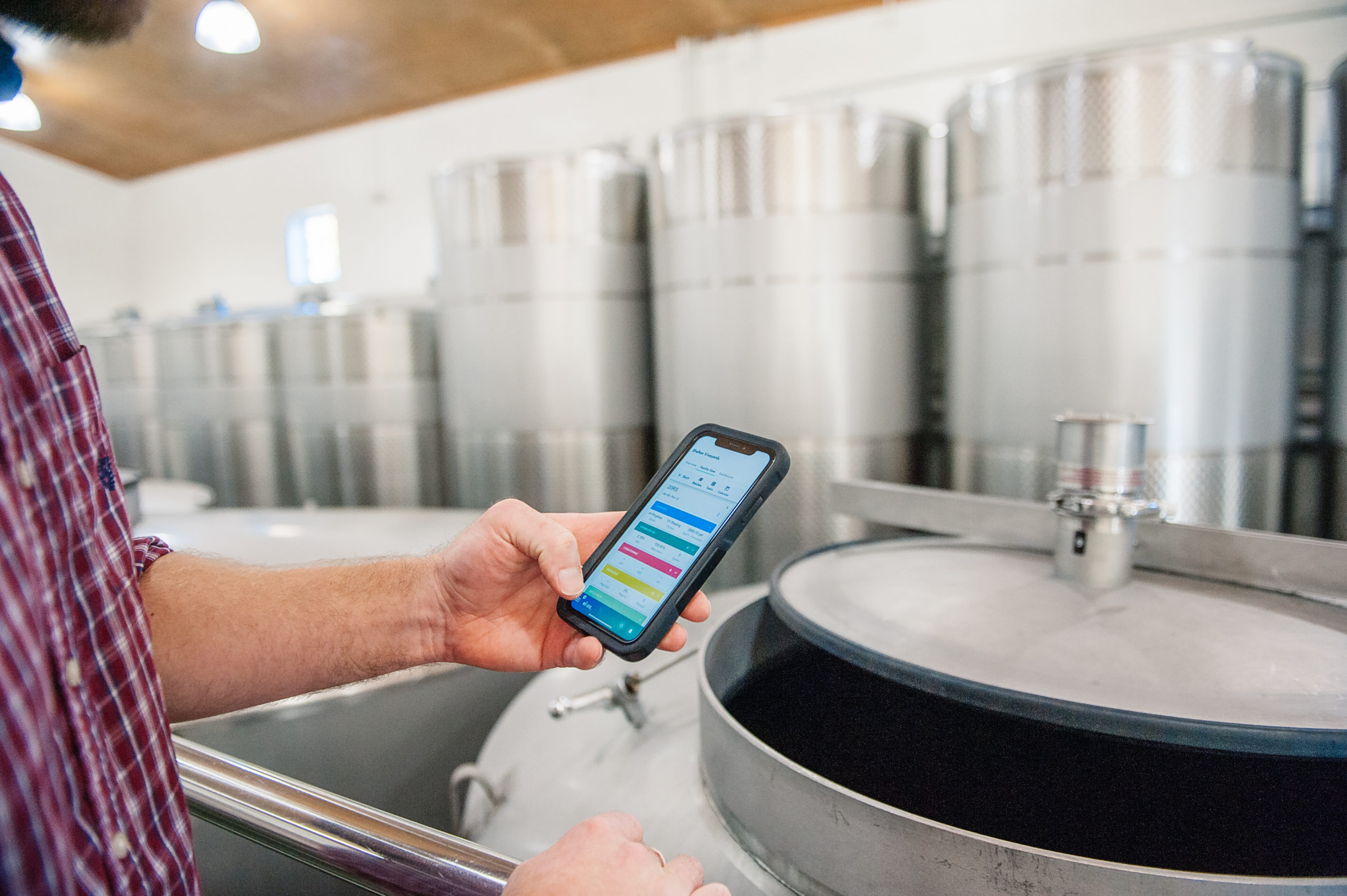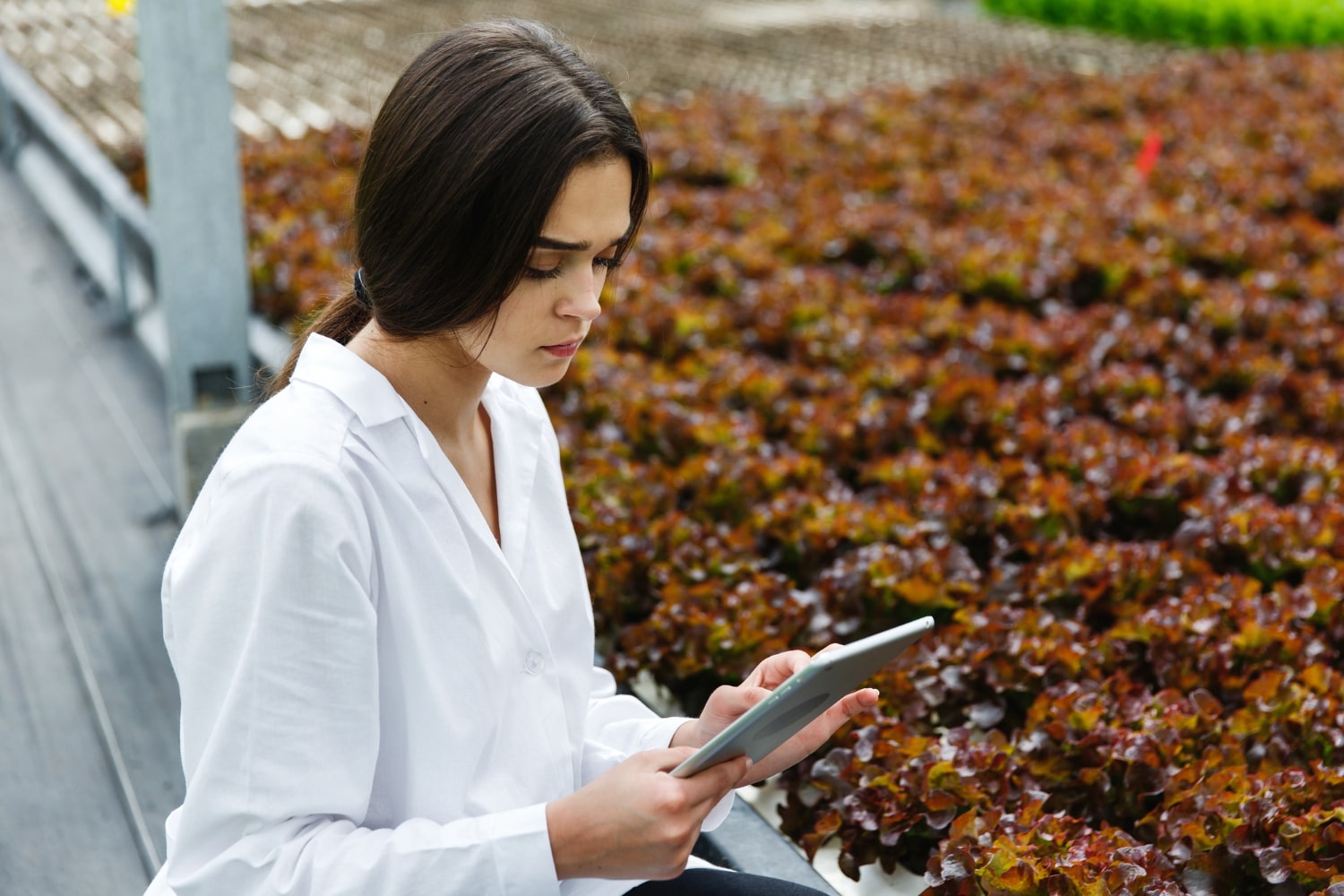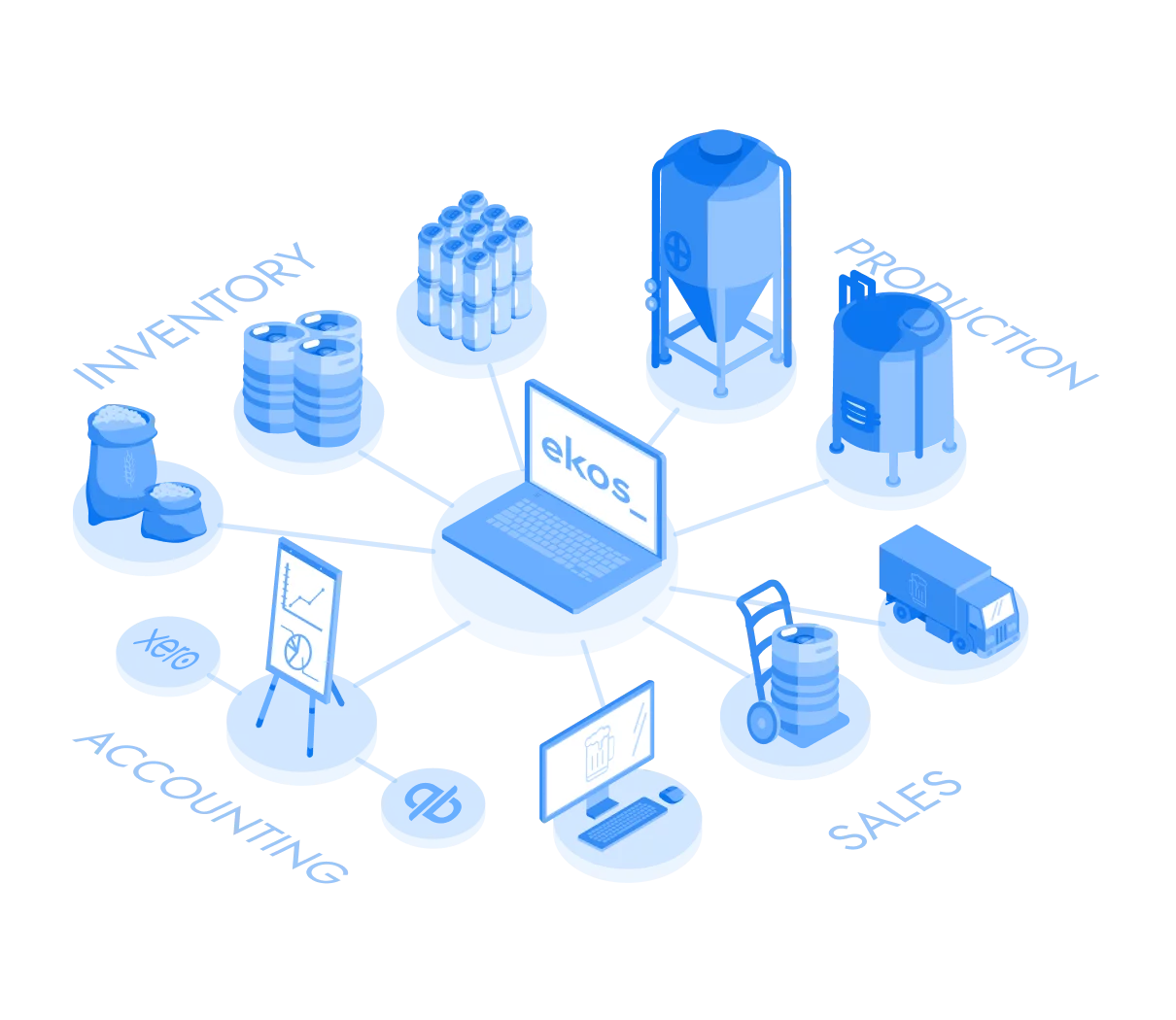The wine industry is associated with longstanding traditions — winemaking techniques passed down from generation to generation. From the Old World to the New World. As romantic as it sounds, this industry has faced some challenges as it tries to balance innovation and tradition. Many wineries have realized the need to update their business models to keep up with the pace and competition of modern life. One way they can do that is with winery software.
What Is Winery Software?
The term “winery software” can refer to many different technology solutions tailored for the needs of wine producers. A few of the processes that winery software can help businesses manage include vineyard management, production, inventory, direct-to-consumer (DTC) sales, wholesale distribution, accounting, and general business management. Many of these capabilities are found in comprehensive winery management software, which we cover later on.
Regardless of the specific area of the business the software is designed for, all winery software deliver some additional functionality or value to your business. For example, many winery software programs are designed to make your team more efficient by automating processes that you’ve been doing manually (like compiling reports). Others help you with record-keeping by housing all your business data digitally. Some help you deliver an improved customer experience during the sales process.
“I knew we needed to use technology to simplify and create efficiencies that would allow us to reach more people & offer quality customer service. I am a data fanatic so I always look for systems that will give me the right data & insights.”
– Co-owner at Washington state winery producing 4,000 cases per year
There are so many different types of winery software. We’ll break down each one and help you understand the different types available. We’ll also share some key metrics from our 2022 report, The State of Technology Adoption in the Wine Industry, that demonstrate how wineries are currently using software to run their businesses. Statistics on this page come from that report.
Table of Contents
Vineyard Management Software
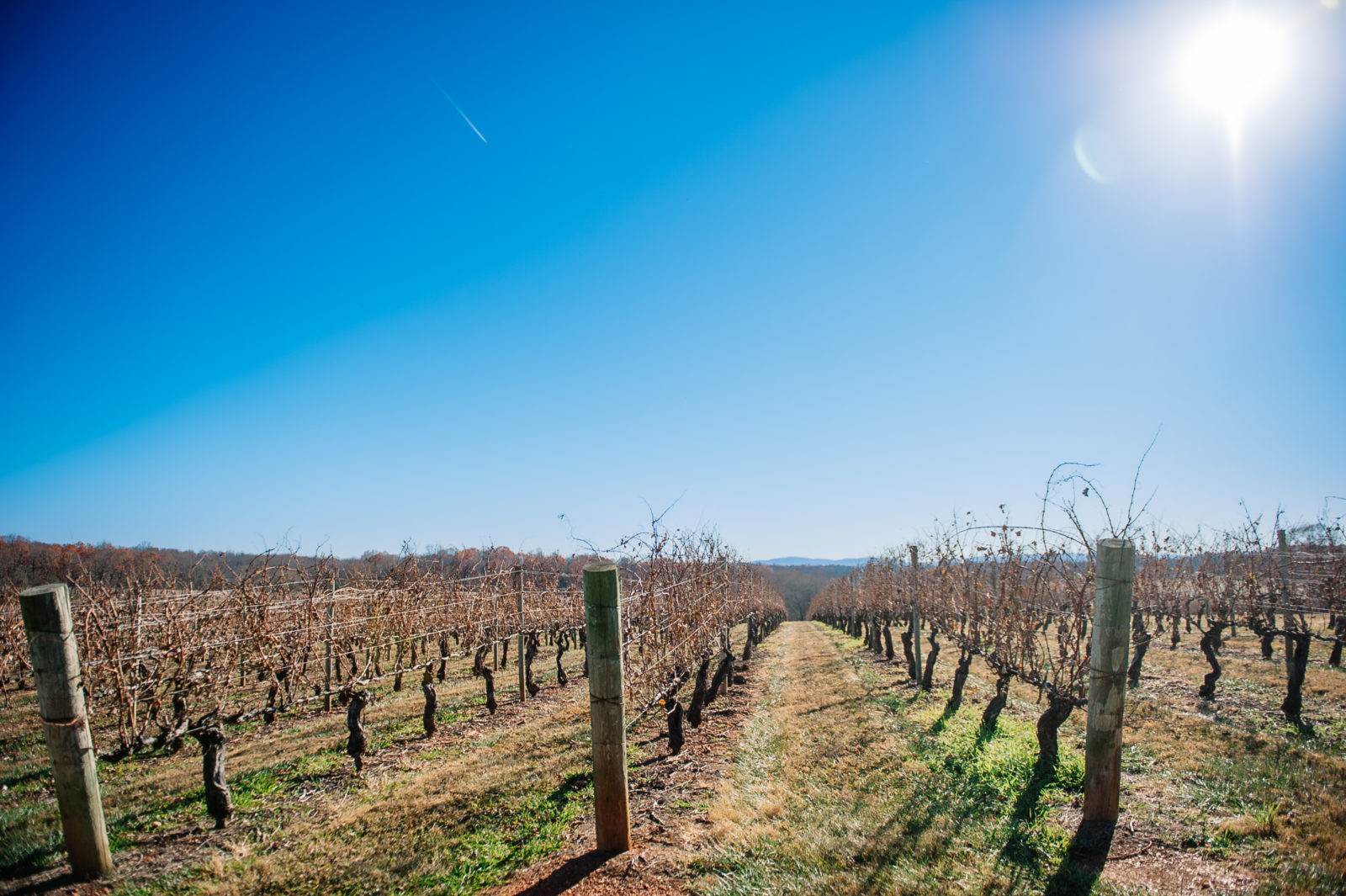
Vineyard management software helps you keep track of everything going on in the grape growing process. This software may help you track weather conditions across multiple blocks, assign work orders to team members, calculate the costs of labor and materials for different blocks, and report on various aspects of vineyard operations.
Obviously this type of software is only relevant to your winery if you grow your own grapes. About 20% of wineries are using dedicated vineyard management software. 46% of wineries are using spreadsheets to manually track vineyard information. Some are even using a combination of both methods (software and spreadsheets). In our survey, nearly 41% of wineries said they use no system at all for vineyard management.
For wineries that do have vineyards, harvest season is busy and vitally important to the overall success of their business. While harvest intake is not typically part of vineyard management software, it’s an important part of any technology that helps winemakers manage the production process. We’ll talk about this type of software in the next section.
Winery Production Software
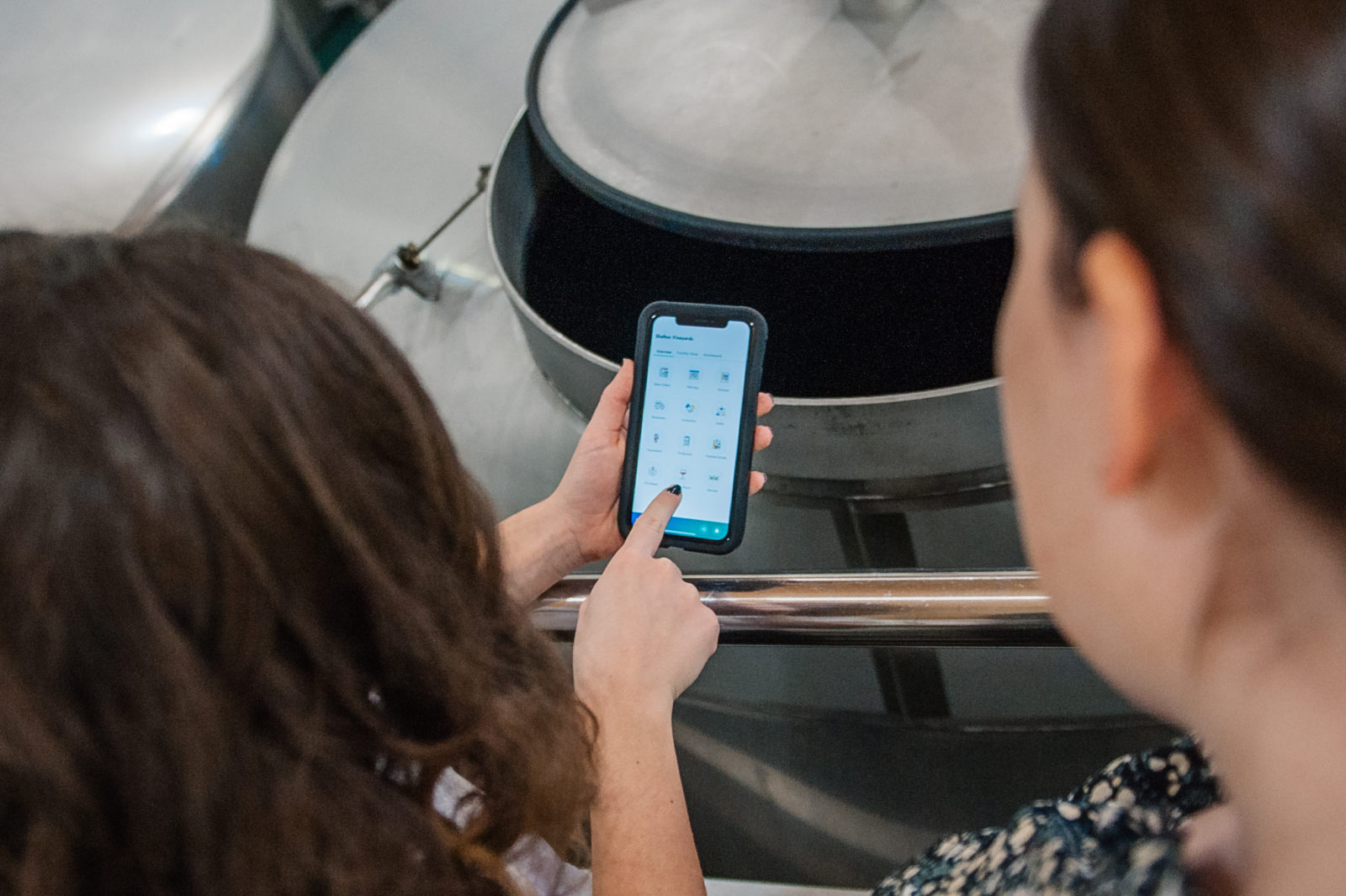
Wineries use a variety of tools to help keep track of wine production. Small wineries often use digital tools to track fermentation metrics and the aging process. Winemaking calculators, for example, provide a backup or secondary check on the primary methods for calculating additions during production. Wine Business’s VinoEnology calculators can help winemakers convert Brix to alcohol or determine Yeast Assimilable Nitrogen (YAN), among many other useful calculations.
However, wine production software is not about calculating specific metrics. The purpose of winemaking software is to keep records of everything from grape to glass. Starting at harvest intake and ending with bottling. That means tracking the grapes and dry goods that go into each wine lot, keeping accurate wine production logs throughout each fermentation, and ultimately using that information to understand the costs of goods sold for each wine. Our research has found that many wineries are not using dedicated software for wine production. Nearly 40% use winemaking spreadsheets, and 13% use no system at all.
Production software can also help wineries keep important quality data in a centralized location. When it comes to quality control and wine analysis tools, 50% of wineries are using ETS Labs. Others using Scott Labs and other analytical services. Labs like ETS run hundreds of analyses for wineries, including Brix, chemistry panels, specific gravity, yeast assimilable nitrogen (YAN), alcohol panels, and much more.
Wineries will send off wine samples for analysis and receive the results. Where are the calculations housed? Because winemaking software can track the entire production process, you can attach lab reports to specific wine lots and look back on them over time. This is especially helpful if you use multiple labs and want to avoid digging through your email or paper records whenever you want to review an old analysis.
Wine Inventory Software

Inventory management is a vital part of any business that manufactures a product, and wineries are no exception. At its core, inventory management refers to the tracking of in-stock goods from packaging to storage to sale. The goal of proper inventory management is to help understand how much inventory they have and how much they need.
This is often a multi-year process based on vineyard blocks that may not produce wine until several years after vines are planted. Winery inventory management software helps wine producers track the movement of bottled wine over time. It analyzes which wines are most successful and profitable. Which may help inform future vineyard blocks or the purchase of grapes, bulk juice, and bulk wine later on. Internet-based software systems also include a wine inventory app or mobile access to the software. This allows wineries to make updates even when they aren’t in front of a computer screen.
Nearly 45% of wineries are using spreadsheets rather than actual wine inventory management software. 11% aren’t using any system at all to track case goods. Many wineries have struggled to transition from spreadsheets and paper records to a comprehensive inventory system, despite the benefits. Wine inventory software is easier for multiple team members to update and access simultaneously compared to spreadsheets or notebooks. Deplete case goods with dedicated inventory software — preventing over- or under-selling of inventory.
Winery DTC Software: POS, Ecommerce & Wine Club
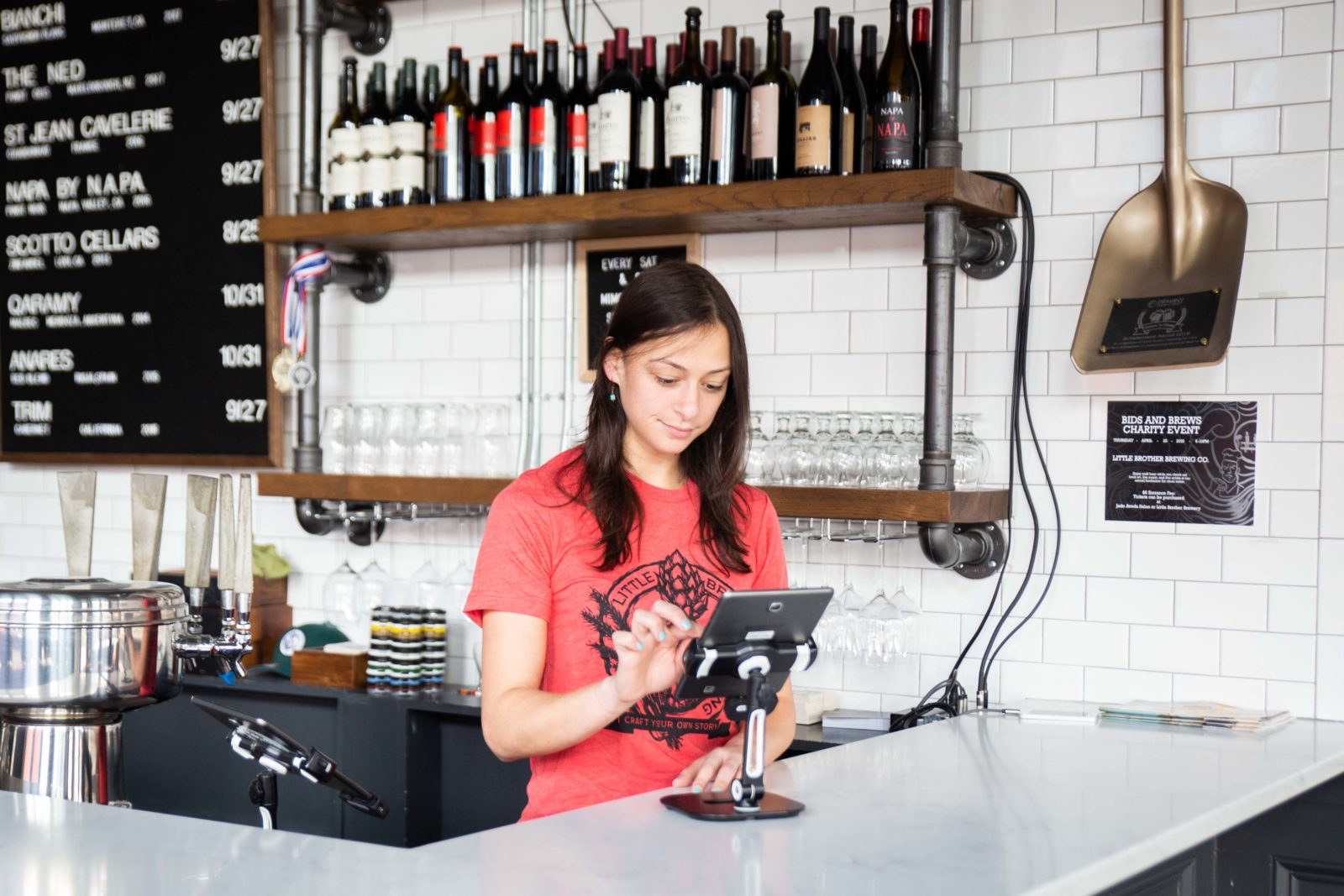
When it comes to direct-to-consumer sales, there are a lot of different functions to consider. If you have a tasting room where you serve the public, chances are that winery POS software is high on your list of technology needs. A POS system is what you may think of as the “cash register” in your tasting room or retail store. These days POS systems for wineries can encompass a lot more than that. Wine POS may also refer to a system that manages your winery’s ecommerce store (where customers can buy wine online) and your digital wine club, depending on the program you go with.
Winery ecommerce software is vital to the modern wine producer — or the traditional producer trying to appeal to new generations of drinkers. A wine ecommerce platform helps facilitate the sale of your wine from an online store. You can either arrange for customers to pick up their bottles on site or have orders shipped directly to their homes (depending on your state regulations). If you have a wine club or subscription program, wine club software can create a better experience for both you and your members. It helps keep all member information in one place and creates a more modern, customizable experience. The best wine club management software will include options for members to customize their shipment frequency. They can also decide what comes in each shipment, and even add on additional bottles outside of the club package.
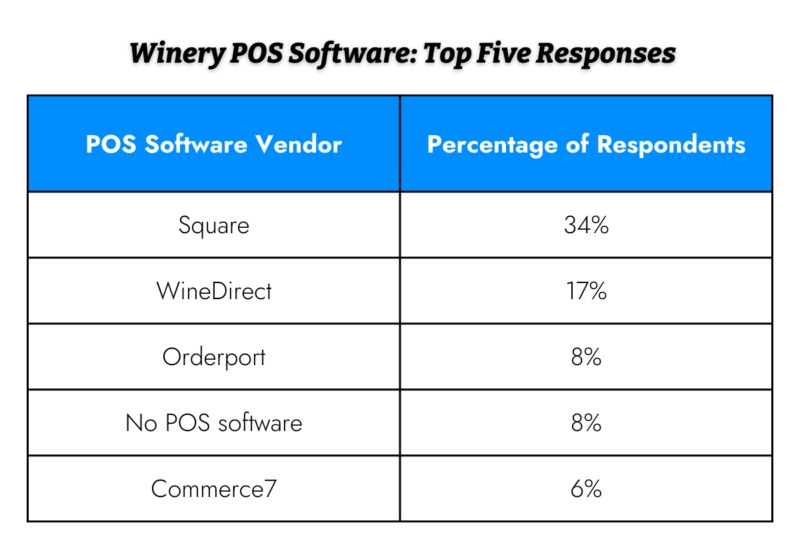
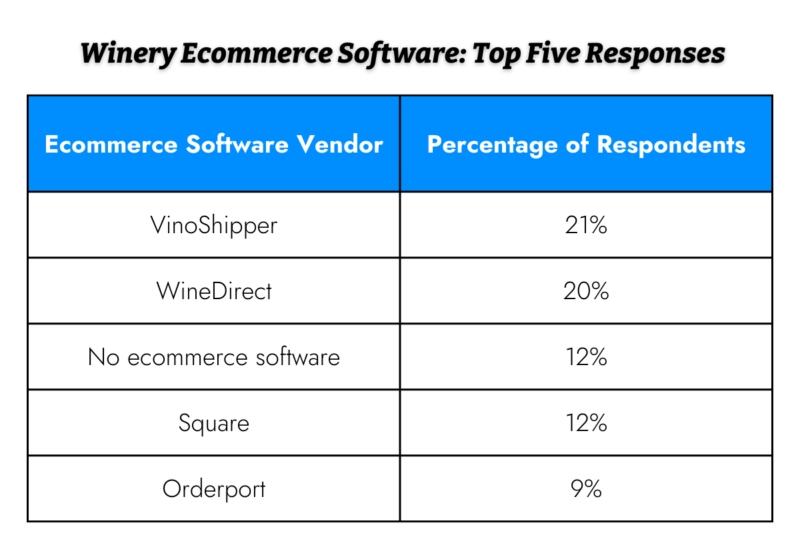
Our 2022 survey found that Square and WineDirect were the top two wine point of sale systems. VinoShipper was the top winery ecommerce solution. WineDirect was also the top wine club software provider, which indicates that some wineries are using one vendor for multiple DTC software capabilities. The most commonly used winery compliance software in the survey are SOVOS, ShipCompliant and VinoShipper. 36% of respondents said they do not use wine compliance software at all. Which may mean that they don’t do enough shipping to require a dedicated tech solution. There’s no magic number for how many shipments or how many states you ship to before compliance software is required. It will likely become clear to you if managing the process becomes more difficult as you expand your sales region.
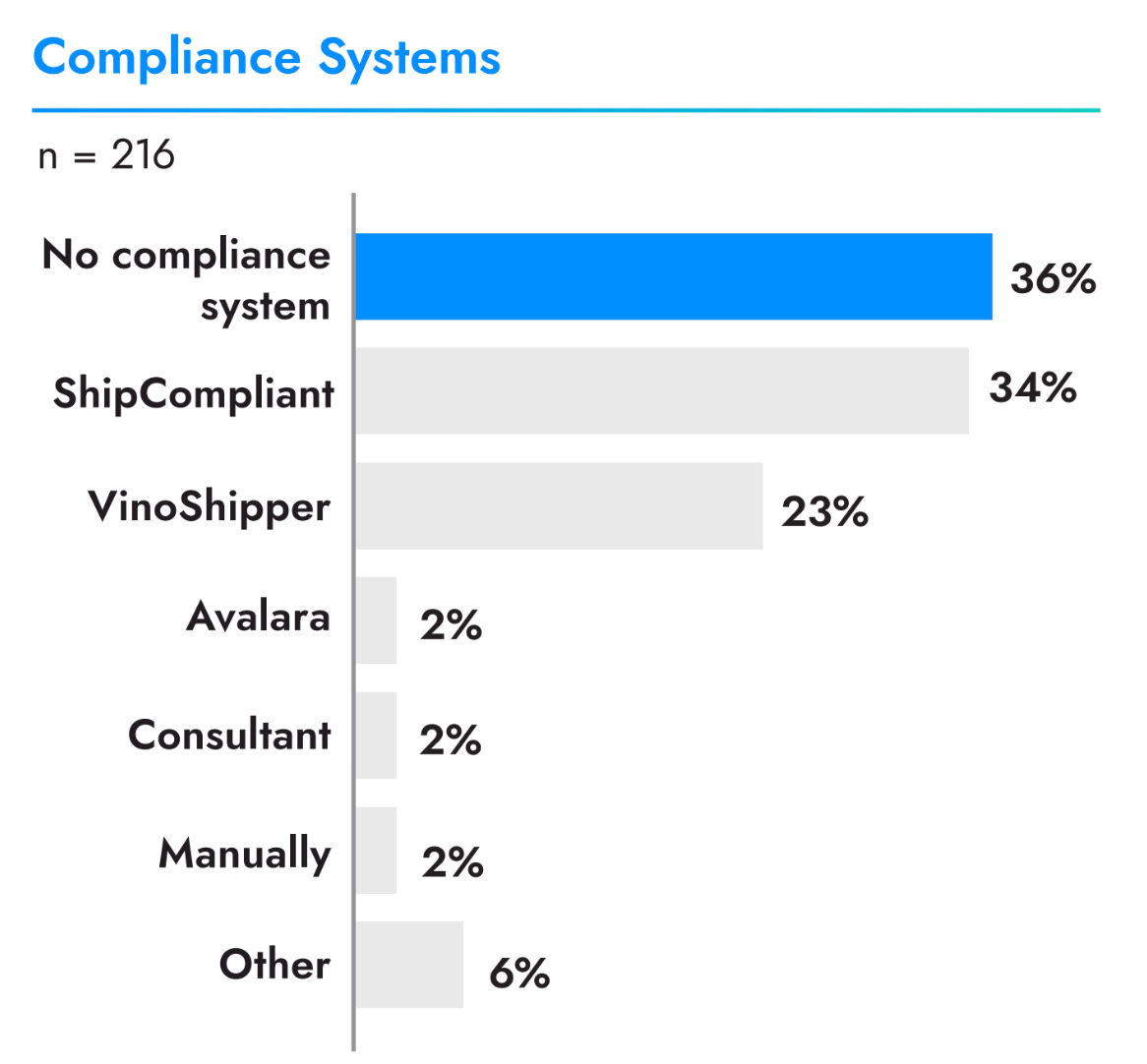
When you demo POS software, you’ll likely pay attention to the way it handles the checkout experience for guests, payment processing, and built-in reporting features. One important aspect of POS software that you may not immediately consider is how it handles inventory management. Once bottles of wine are sold to customers in your tasting room or ecommerce store, how do you document that inventory depletion? Many wineries have to reconcile POS sales with their inventory management system manually. Which you may not have time to do until weeks after the sales are actually made. Finding DTC software that integrates directly with your inventory system can save you a lot of time. Be sure to look for compatible systems if possible.
Wholesale Wine Distribution Software

Wine distribution software could refer to either software to manage wholesale sales or for wine distributors to manage the inventory and delivery process. For wineries, distribution software is focused on modules that help them manage wholesale sales orders, invoices, and payments. Wineries need to know what orders need to be fulfilled and whether they have enough inventory on hand. Likewise, it’s important to be able to look back on these numbers to help plan ahead — usually several years in advance — for future vineyard planting and production.
On the flip side, wine distributor software includes products like digital order portals. This allows distributors to order directly from producers without the need for emails, phone calls, or text messages. Other software helps distributors manage the actual logistics of warehousing and delivery of their suppliers’ products to retailers.
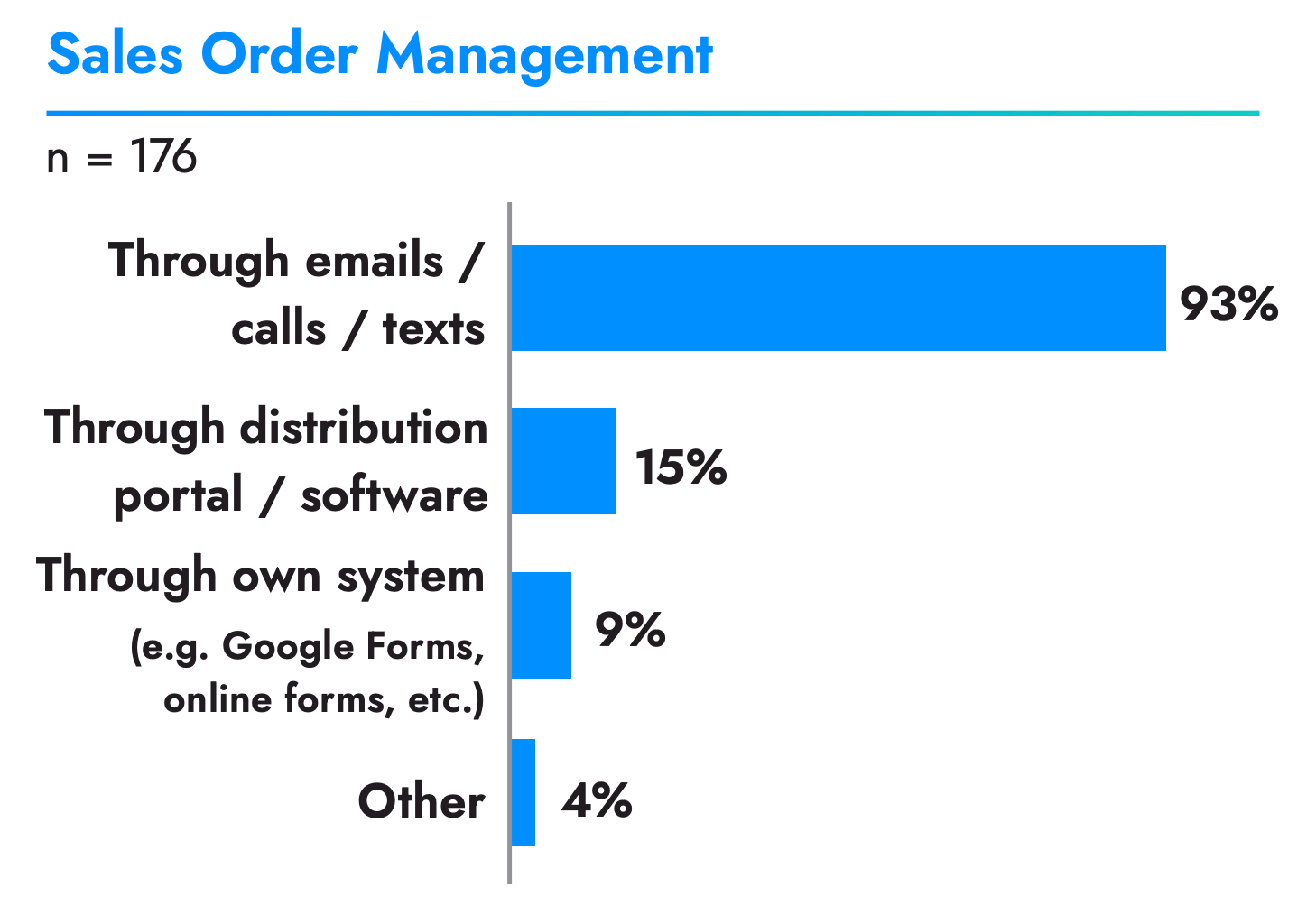
When it comes to wineries, few are managing the wholesale sales process digitally. In our research, just 15% of wineries told us they use a distribution portal or wine distributor software. Instead, these businesses are managing the wholesale ordering process through emails, calls, texts, online forms, or a combination of these.
Similarly, 44% are not using any kind of winery CRM software to manage their wholesale wine customers. Of course, this could be because the number of customers is so low that keeping track of information is easy. The wineries we surveyed work with an average of 12 distributors. It’s worth noting that wine CRM software can help keep contact information, purchase history, and invoices in a centralized database.
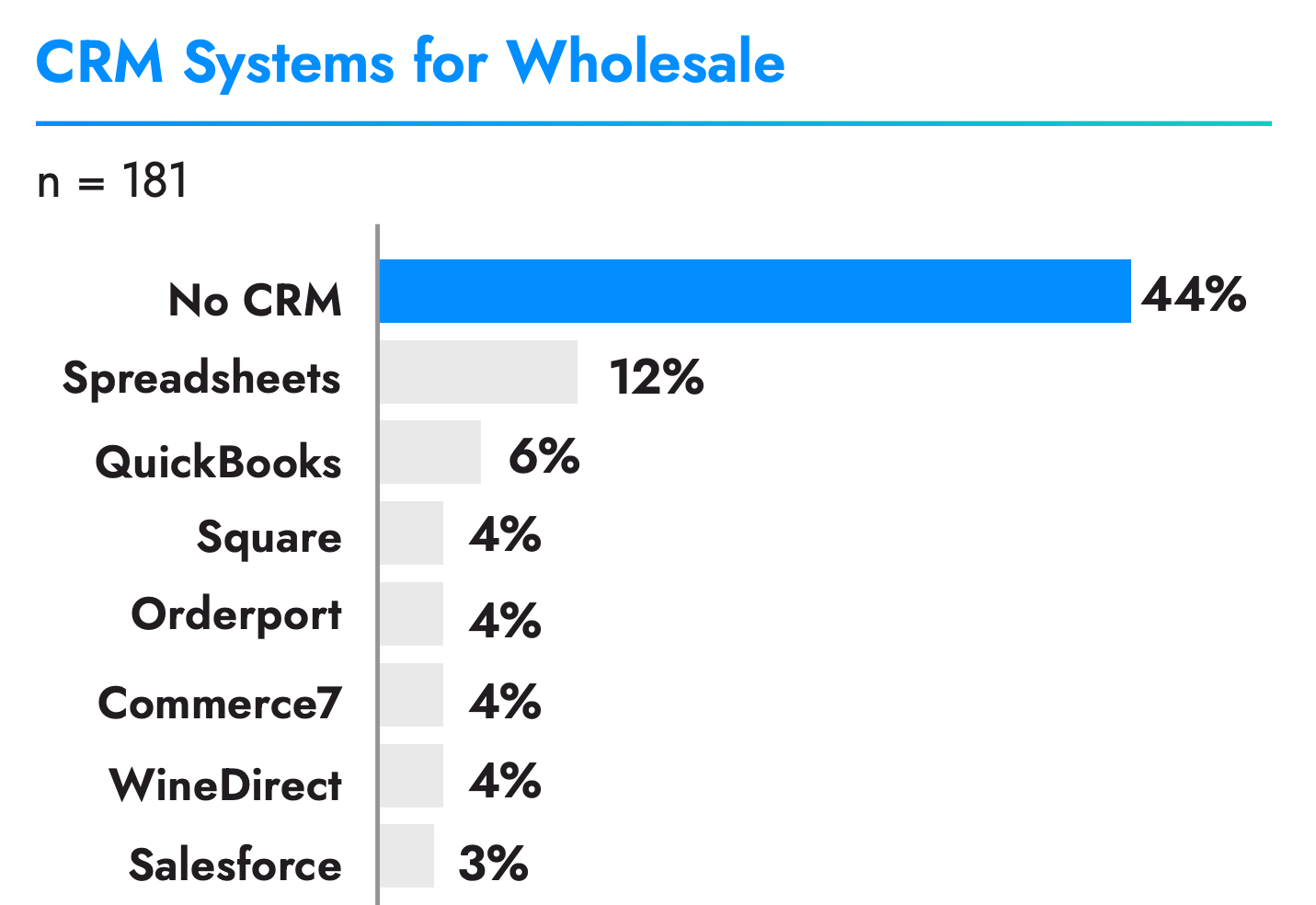
Winery Accounting Software
Accounting software for wineries is similar to accounting software for any other inventory-based business. It helps you track income, expenses, invoices, payments, bills, receipts, and — to some extent — inventory. Generally, business owners (or their accountants) look for wine accounting software that is easy to use and offers reports that provide insight into cash flow and profitability.
Looking for small winery accounting software? 80% of wineries use QuickBooks, particularly those producing under 50,000 cases per year. About half of those use the older QuickBooks Desktop for winery accounting. The other half use the cloud-based QuickBooks Online. Like any other cloud-based software, QuickBooks Online offers regular software updates, the ability to access it from anywhere with an internet connection, and easier collaboration (with, say, your accountant).
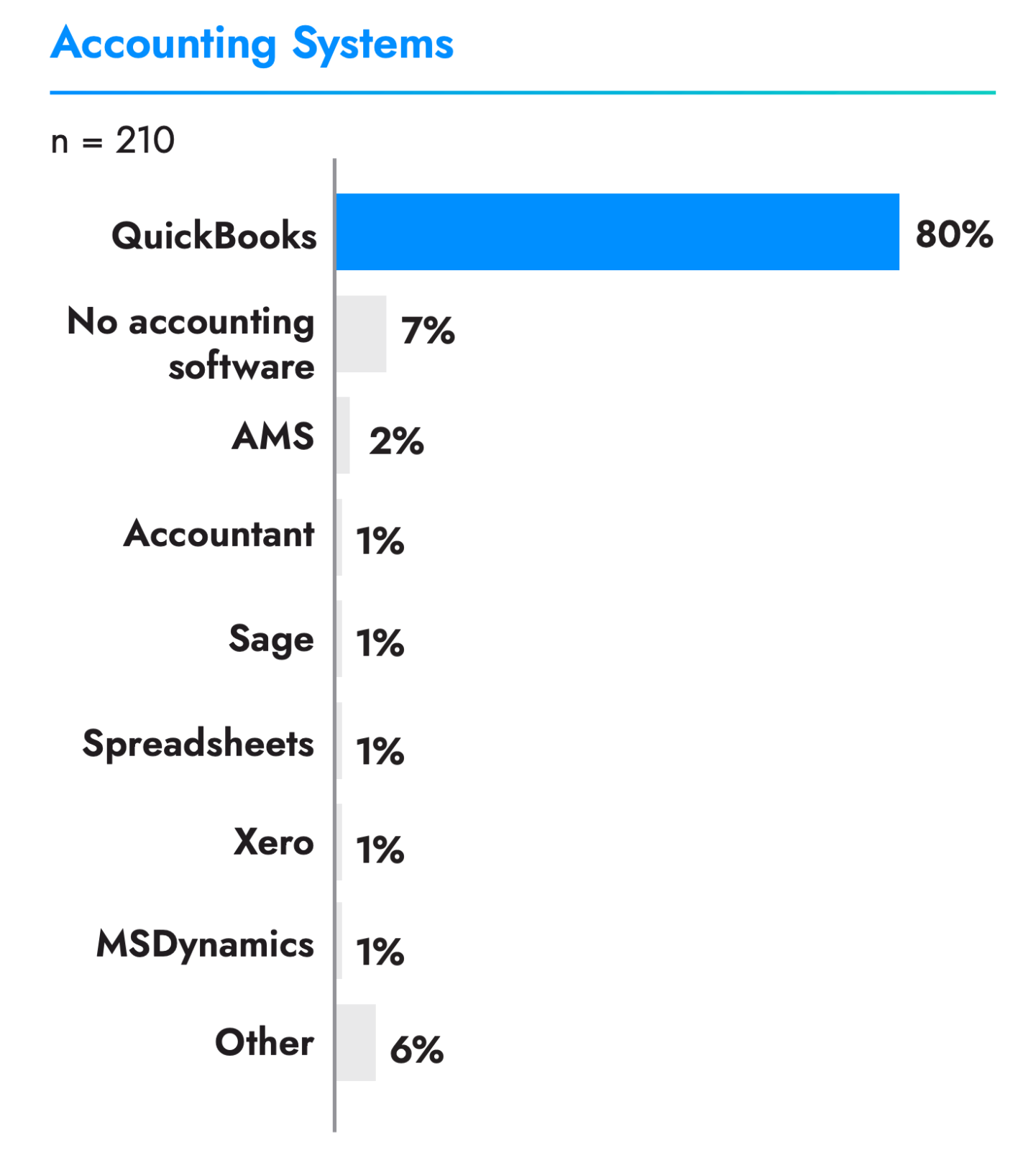
If you’re using software for winery inventory management, check whether it can connect to your accounting software. An integration between these two vital systems creates automated accounting processes. These processes minimize double-entry errors, streamline departmental communication, and collect compliance data — all in one place. Not all software solutions will integrate together, so be sure to ask about this when demoing new software.
Wine Management Systems
If you’re looking for a system that can serve as a central hub for your business’s records and reports, winery management software may be the solution. You can think of this type of software as an information management system. It is housing data about inventory, production, and sales activities that can then be shared with your accounting system. The goal of winery management systems is to give you a holistic view of your business and deliver insights. Few wineries are using a system like this. Nearly 50% use spreadsheets to track key business functions such as wine production and inventory management.
To be clear, no single piece of software can replace all the others discussed above. Even with wine management software, you will still need a POS or ecommerce system for your DTC sales and dedicated accounting software. But of all the types of winery software, this category covers the most parts of your business. It connects your back office to the cellar and tasting room so your team can avoid entering data in multiple places.
One key benefit of this end-to-end functionality is that you get a more accurate picture of your cost of goods sold. Which can help you evaluate your wine pricing strategy and the overall health of your business over time. When you use piecemeal software solutions and don’t connect them together, it can be difficult to see the big picture. Using one primary system (and, ideally, connecting it to your POS and accounting software) can help alleviate the burden of trying to uncover important insights manually. Many wineries pull information into spreadsheets and try to manipulate it themselves. It takes a lot of time and mental energy to get all the data to make sense.
If you’re on the hunt for winery management software, make sure you decide what functions you need most. Some winery software focuses more on production and leaves out key sales and reporting functionality. So be sure you know your “deal breakers” before signing any contracts.
What Software Do Wineries Use?
As we’ve discussed in this post, winery software covers many categories from production and inventory to sales, accounting, and beyond. We revealed some of the top vendors for many categories of winery software. There’s a lot more information to dive into in our 2022 State of Technology Adoption report, which you can read in full (for free). In the report, you can find information about:
- How wineries grade themselves on technology adoption in 2022 versus our previous survey in 2020
- The technology wineries say they can’t live without
- What tools wine businesses are using to manage inventory, production, DTC, distribution, and accounting processes
- Tips for using technology to improve operational efficiency and grow your business

About Ekos
Ekos is an end-to-end winery management software that helps winemakers manage processes in every department. No matter your role, we provide the tools to help you stay organized, work more efficiently, and streamline systems.
Wineries that use Ekos save time by automating inventory and production management, COGS tracking, and TTB reporting. Compared to using spreadsheets, wine businesses find this provides better insights with less frustration. “It is nice that Ekos automatically gives us the blended cost on our products,” said Amy Aguilera, director of operations at Thomas Allen Vineyards & Winery. “Before, we did all of that manually on spreadsheets. It was a headache and caused us some blind spots.”
Interested in learning more about how you can streamline your business with winery software? Take a quick self-guided product tour or set up a 20-minute demo with a member of our team.
